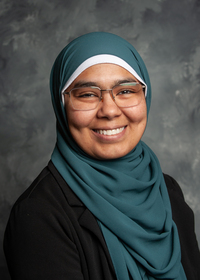How Do Adults Learn?
Andragogy, or the theory of adult learning, emphasizes the value of the process of learning. It recommends approaches to learning that are problem-based and collaborative. It also emphasizes more equality between the teacher and learner.
Whether you are a teacher, manager, team leader, mentor, or coach, ultimately your interactions with others involve getting them to change their behavior. This could be through learning new information that modifies their attitude. It may also be through acquiring new skills with which they can solve new problems.
Adult Learning Principles
Regardless of the desired outcomes, there are six principles of adult learning that should help shape your interactions with other adults and make the process more effective.
Adults are internally motivated and self-directed. Your job is to facilitate the learner toward more self-directed and responsible learning and foster his/her internal motivation to learn. This translates to a program that moves from more to less structure, less to more responsibility for the learner, and more to less direct supervision by you. All of this should occur at a pace that is challenging but not overwhelming. As such, the pace will differ with each learner.
Adults bring life experiences and knowledge to learning experiences. Most adult learners appreciate the opportunity to apply their existing foundation of knowledge and life experience to their new learning experiences. You can enhance this opportunity by encouraging learners to draw on those experiences when problem-solving, reflecting, and thinking critically. You can also challenge them to examine existing biases or habits based on life experiences by providing different perspectives and asking probing questions.
Adults are goal-oriented. Part of working with adult learners is determining their readiness for problem-based learning and the introduction of new knowledge or skills and then facilitating that readiness. At some point, learners should realize the need to learn in order to cope with real-life tasks or problems. When this happens, sharing relevant, personal experiences that are clearly linked to the learner’s personal, educational, and career goals is one way to facilitate this process.
Adults are relevancy-oriented. Simply put, adult learners need to know that what they are learning is relevant to what they want to achieve. Often, you will have to help others see the relevance in certain types of learning opportunities, such as professional development, formal coursework, and even professional networking. It can be helpful to ask learners to reflect on what they expect to learn (before an experience), what they learned (after the experience), and how they might apply what they learned in their future efforts to achieve their goals.
Adults are practical. Most people do not want to spend time learning something they will not be able to apply in real life and in real time. It is important to demonstrate how what they learn applies to them.
Adults like to feel respected. This is self-explanatory, but you can demonstrate respect for learners simply by taking interest in their words and actions. Acknowledge the experiences and knowledge they bring to the relationship. Encourage the expression of ideas, critical reasoning, and constructive feedback at every opportunity. And most importantly, regard them as equals.
Participatory Learning
Adults want to be involved in how and what they learn. This means that you should take the time to understand your learners and involve them in the process of determining their learning objectives. First, ask yourself the following questions, and then, if possible, ask your learners:
- What is their prior knowledge and experience?
- What are their attitudes and beliefs on the subject at hand?
- What do they really need and/or want to accomplish?
- What is the best environment for the learning process to occur?
Learning Objectives
Once you’ve determined the answers to the questions above, you can begin to develop SMART learning objectives. This acronym is helpful to remember that, because of the way adults prefer to learn, these objectives should be—
Specific
Measurable
Achievable
Realistic
Time-bound
Here’s an example of what that might look like for a change in knowledge:
By the end of the half-day customer service training program, 75 percent of the participants will demonstrate increased content knowledge of proper phone etiquette as measured by comparing responses on pre- and post-tests.
Here’s an example of a change in behavior:
Within 6 months of attending the Leaders in Action conference, 50 percent of participants will have drafted a personal leadership plan and volunteered for a leadership role in their personal or professional life. This will be determined by follow-up interviews and electronic surveys.
Most adults, whether they realize it or not, are lifelong learners. Learning can take place in all types of formal and nonformal settings. It’s up to you, then, to determine what they want to learn and how to share that information in a way that is meaningful and useful to them.
Publication 3378 (POD-11-23)
Reviewed by Nesma Osama Abdelrahm Osman, PhD, Assistant Professor, Human Sciences, from a previous edition by Marina Denny, EdD, former Assistant Professor, Human Sciences.
The Mississippi State University Extension Service is working to ensure all web content is accessible to all users. If you need assistance accessing any of our content, please email the webteam or call 662-325-2262.


